
JAGUAR XJ
Generations Timeline, Specs and Pictures
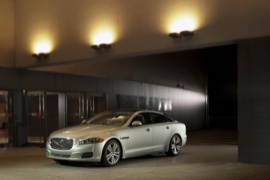
While the design of the fourth generation of the XJ started in 2005, under Ford management, the model was launched in 2009 under the new, Tata Motors management.
It was renewed in 2012.
The Jaguar XJ didn’t face too many generations. The first XJ was launched in 1968 and it was refreshed several times. It was the same situation with the following generations so, the British company decided to do the same with the fourth model. But it had to be refreshed and had to receive new engines to comply with the Euro 6 pollution norms.
From the outside, the car didn’t receive obvious changes. The standard version received a set of 19” light-alloy wheels. The heated windshield was available from the 2009 model, but it became standard for the 2012 facelift. A full-length panoramic glass roof was installed to offer an additional sense of spaciousness. Like the 2009 model, the 2012 facelift was available in standard or long-wheelbase versions.
Inside, there were more changes. A full digital 12.3” instrument cluster was included and more comfort features were included in the long-wheelbase package. The 8” dual-view infotainment screen was fitted as standard for all the range.
Under the skin, the 2012 XJ received more aluminum components, making the car lighter than before. The standard transmission was an 8-speed automatic, replacing the older gearbox that brought a lot of complaints in terms of reliability.
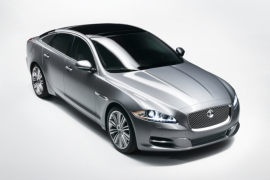
Jaguar launched the utterly new XJ in 2009 after Ford sold the British brand to the Indian company Tata Group in 2008.
Ford asked Jaguar to start working on a new flagship model in 2005 under the supervision of Ian Callum as a lead designer. The result was a complete departure from the Jaguar’s XJ classic lines. Moreover, the result was more of a sport-executive sedan than just another premium on the market. It resembled the British brand’s motorsport origins.
With its shape that resembled more of a four-door coupe than a luxury car, the XJ featured a bold front fascia with a silver mesh grille. Its cat-like headlights swept back and underlined with eight LEDs on each side as daytime running lights, the carmaker’s flagship. The XJ showed a front fascia more appropriate for a GT vehicle with its lower apron enhanced by a center grille and two side-scoops. Its profile revealed a long, sloped-down rear windscreen and narrow side windows, while the short trunk lid was flanked by the vertical taillights and adorned by the brand’s flying Jaguar.
Inside, Ian Callum sought its inspiration from luxury boats with a run-around wood veneer that emerged from the door cards to the upper side of the dashboard. Its front bucket seats were designed more for comfort but with enough side bolstering. Between them, a tall center console sported the rotary dial for the gear selector. The bench offered enough comfort for two passengers at the back, but the tall transmission tunnel limited the legroom for a third person.
Under the hood, the carmaker installed a range of gasoline and turbo-diesel engines carried over from the XF range. At the launch, it was available with the 3.0-liter V-6 oil-burner and the 5.0-liter V-8 powerplants. Later on, the carmaker extended the range.

A powerful, luxurious large sedan, the Jaguar XJ was the most technologically advanced vehicle produced by the British company at the time.
As the 3rd generation started to become dated, the XJ was redesigned and improved for the 2008 year model.
While the exterior design was slightly redefined, it still shared many of its lines with he previous models, staying true to its roots.
Roomier than the previous version, the XJ had the same luxurious cabin with wood trims, leather and chrome inserts.
The 2008 model came in five different versions: base XJ8, Xj8 L (long wheelbase), XJR, Vanden Plas and Super V8.
Both the XJ8 and the XJ8 L came with standard 18-inch alloys, active damping suspension, xenon headlamps, a moonroof, full power accessories, Bluetooth connectivity and the Computer Active Technology.
The XJR was not available with an extended wheelbase and featured 19-inch alloys, a different brake system, adaptive cruise control, a tweaked suspension, a navigation system and power-folding side mirrors.
Stepping up to the Vanden Plas, the vehicle was equipped with a heated steering wheel, a navigation system, picnic trays for the rear cabin, power-folding exterior mirrors and a premium audio system.
Moving up to the top-of-the-range, the Super V8 was, of course, equipped with a V8 engine that cranked out 400 hp. Other features included most of the equipment available with the other trim levels and added a rear DVD multimedia entertainment system and a 4-zone climate control system.
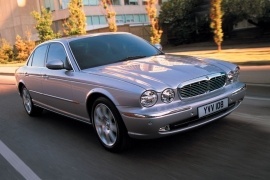
The 3rd generation Jaguar XJ - also known as the X350 - was introduced by the British car maker in 2003 and featured an entirely revised powertrain.
The X350 model was fitted with more powerful units, with an all-new 3.5L V8 engine only available for the European market. Also, car’s bodywork was built entirely out of aluminium - like the Audi R8 - while some parts of the chassis are made of steel. This reduced the car’s weight with approximately 40%, as it now weighted as much as a BMW Mini. In terms of exterior changes, the first thing that caught the eye was the redesigned headlamps.

Jaguar introduced a completely new XJ model in 1997, marking a solid comeback on the luxury sedan market.
When Ford bought Jaguar in 1990, it found a great car manufacturer in a bad financial shape. The Coventry-based carmaker had only old models, such as the XJS and the XJ flagship, which were not so young and appealing anymore. Moreover, its engines were outdated, and there was a risk they won’t get the Euro 3 emission test approval. So Ford stepped in and pumped the money needed to improve the lineup. In 1996, the British carmaker replaced the 25 years-old XJS with the XK and, in the following year, at the Frankfurt Motor Show, it revealed the XJ8.
While the car was based on the same 1985 XJ40 platform, it featured a completely new design. Its quad, round headlights in individual clusters and the split-grille at the front made a clear distinction over its competitors. By 1997, none of its competitors made round headlights anymore. Another sign of recognition was the low greenhouse and the sloped-down trunk lid.
Inside, the carmaker installed a luxurious, hand-crafted interior with wood veneers and expensive leather. The instrument panel displayed three separate clusters for the speedometer, tachometer, and a third one for the coolant temperature and fuel level. On the center stack, the carmaker installed a new sound system carried over from Ford, while the center console hosted the gear-lever for the automatic transmission. But unlike its main competitors, the XJ didn’t provide too much room for the rear seat occupants.
Under the hood, Jaguar installed its new V-8 engines introduced on the XK8. It paired it with a five-speed automatic gearbox provided by ZF.
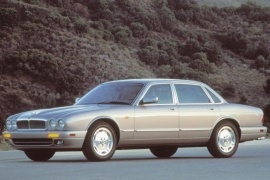
Jaguar made another step forward for its flagship limousine, the XJ, in 1994 when it unveiled the X300 project.
While it was instantly recognizable as an XJ, it featured an updated design where the difference was in the details.
The car was a hybrid development between Ford’s demands and British engineering. While it had to stick with some mandatory parts developed by its new owner, Jaguar could use its older inline-six and V12 engines, along with the independent rear suspension.
When Geoff Lawson penned the vehicle in 1991, he had to comply with the carmaker’s design language and carried over the cues from the previous XJ, code-named XJ40. He created a similar flat hood with a small bulge in the middle, symbolizing the longitudinally-mounted engine. One big change was for the headlights, which didn’t share the same cluster anymore. Moreover, unlike its predecessor, it was not available with rectangular headlamps. Another important change was for the bumper, which was not metallic. But the designer managed to preserve the short greenhouse, just enough to host passengers inside without a tall hat.
The cabin offered room for four passengers with a big center console separating the front seats. Depending on the options, the seats were covered with wool or leather, and the wood trims were present on the door panels, dashboard, center console, and surrounding rear climate control vents. Yet, the headroom was not big enough for anyone taller than the average, and the legroom was good only in the long-wheelbase version of the XJ.
Under the hood, Jaguar installed its 3.2-liter, 4.0-liter inline-sixes, while the range-topper featured a 6.0-liter V12. This generation was built upon a new platform, named XJ81.
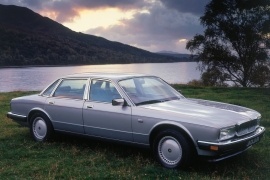
The 1986 Jaguar XJ - also called Project XJ40 - was intended as a replacement of the Series III XJ model that was launched in the late ’70s.
However, several external problems - including the fuel crisis - kept the XJ40 inside the development series until the mid-80s. The design of the new model was made in-house. It was finally launched in 1986, aiming to rival the BMW 7 Series on the upper premium sector. It was initially offered with a wide range of 6-cylinder engines, while later receiving a new V12 unit (on the long wheelbase version) towards the end of its production cycle.
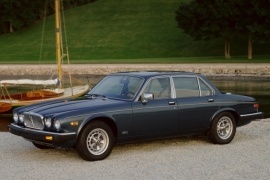
Jaguar introduced the new generation XJ model - also known as the Series III - in 1979.
The LWB version of this model was designed by Pininfarina and featured a revised bumper, new rear lights and restyled roofline. The Series III XJ underwent its first modifications in 1982, most of the changes happening in the interior compartment. Starting 1987, Jaguar only produced the V12 engine-powered model, as the 6-cylinder unit was sidelined. Production ceased in 1992, with the last 100 units being sold as special edition models commemorating the end of production in Canada.























































